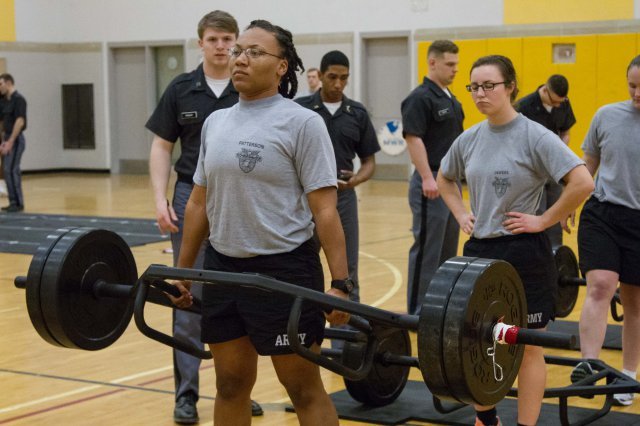(Army Times) -- After several delays, the Army will roll out the Occupational Physical Assessment Test Jan. 1 for all recruits and soldiers looking to reclass into physically demanding jobs like infantry and armor.
Soldiers will have to complete the four-part test to enter certain military occupational specialties. The test also eventually will expand to help recruits determine which jobs they're qualified for.
This new requirement comes as the Army works to integrate women into its previously closed combat specialties.
The OPAT consists of four events: a medicine-ball throw, standing long jump, deadlift and interval run.
Unlike other Army fitness tests, the OPAT only has one scoring scale, with no separate charts for age or gender.
OPAT scores are divided into four physical demand categories: heavy (black), significant (gray), moderate (gold) and unprepared (white), officials said.
Soldiers or recruits who meet the standards for the highest physical demand criteria — or the black category — qualify for all MOSs. As a minimum, all must meet the requirements of the gold category.
Infantry, armor and combat engineer are examples of jobs that would be considered as high physical demand, or black, on the OPAT, officials said. There are about a dozen jobs in this category, almost all of them combat arms jobs.
Jobs that fall in the significant or gray category could include tank mechanics and helicopter repairers, who often have to lift heavy equipment.
The vast majority of MOSs will fall in the moderate or gold category. Examples include many of the Army’s medical MOSs and logistics-based jobs.
The OPAT will be required only for soldiers reclassifying into physically tougher jobs — at least for now. The Army is still looking at whether to adopt a “combat readiness test” for troops.
The test, if senior Army leaders decide to pursue one, will be one way to assess soldiers’ abilities to meet the demands of their jobs after leaving the training environment, officials said.
This effort is separate from the OPAT, but the research that went into developing and choosing that test’s exercises could inform any future combat readiness test. The OPAT, or some elements of it, could fill the role of the combat readiness test.
Much of the research into a combat readiness test is being conducted by the Center for Initial Military Training, which is the Army’s proponent for fitness, and experts are looking at whether the Army needs such a test, what one should look like and how often it should be administered.


